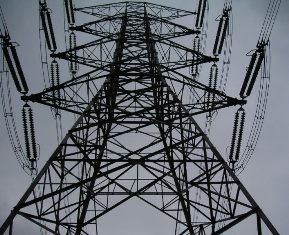Electrification based on three-phase current system
The emergence of the technique of three-phase currents solved not only the problem of using electric power, but also its transmission over considerable distances. It marked a new, modern stage in the development of electricity and led to the transition to broad electrification.
The three-phase system was first demonstrated at the International Electrotechnical Exhibition in 1891 in Frankfurt am Main. At the initiative of the prominent German electric power industry, O. von Miller, the organizers of the exhibition turned to AEG, where Dolivo-Dobrovolsky worked, with a request to arrange the transmission of energy with a capacity of 300 liters. from. From a waterfall on the river. Neckar (near Laufen) to the exhibition grounds.
Under the direction of M.O. Dolivo-Dobrovolsky, a transmission line with a length of 175 km was constructed with a linear voltage of about 15 kV. At the exhibition, a thousand incandescent lamps burned, an induction motor with a power of 100 kW pumped water for a decorative waterfall. The maximum transmission efficiency was 75.2%, which at that time convincingly proved the economy of the power plant.
After the closing of the exhibition, the hydroelectric station in Laufen was taken over by the city of Heilbronn and was used to power the city's lighting network and a number of small factories and workshops. This was the first industrial installation of a three-phase current.

In 1892, the Bulach-Oerlikon power transmission line was ready in Switzerland, and then a number of power plants in Germany were quickly put into operation. In America, the first installation of a three-phase current was introduced in California in 1893 and in the same year in Russia at the Novorossiysk elevator. It is noteworthy that the capacity of the installation in Novorossiysk (1200 kW) was superior to all three-phase power plants that existed before.
The introduction of a system of three-phase currents flowed in an atmosphere of intense struggle. The opponents of this system were in the United States Edison, in England - Swinburn, in Austria-Hungary - Dery, in Switzerland - Brown. All of them were heads or representatives of leading electrotechnical firms, which for a number of years actively introduced one constant, others - single-phase or two-phase alternating current.
Their resistance was broken at the turn of the XIX-XX centuries, when the advantages of three-phase current technology were clearly revealed. It caused the possibility of concentrating the production of electricity and transferring it by high-voltage currents to considerable distances.
As the construction of high-voltage networks grew, their voltage increased: in the mid-1990s, it did not exceed 10 kV, and by the end of the century 50-60 kV lines were introduced. The three-phase current system facilitated the rapid introduction into the production of relatively cheaper and more reliable asynchronous electric motors.
The process of electrification of industrial enterprises was accompanied by the displacement of the steam engine from the drive system and the restriction of its destination as the primary engine, i.e., its transition from production workshops to power plant halls.
The operation of powerful electric arc furnaces was associated with considerable difficulties due to tremendous current surges - the rated current of the furnaces reached several hundred amperes.
The characteristics of the arc itself played a decisive role in the technological process. In particular, the elongation of the arc promoted the economics of the furnaces, since the arc was made more stable and the heat transfer to the metal was improved. To give the desired shape and size to the arc, the electromagnets were installed, beginning with the first Siemens furnace.
A successful way of extending the arc was found by the Russian engineer SI Telny (1916): a copper solenoid, connected in series with the electrodes, was laid in the furnace under the furnace; The interaction of the electromagnetic field of the solenoid with the arc caused the arc to rotate, which made it elongate.
The search for rational methods of induction heating continued. In 1900 the Swedish FAKellin invented an induction furnace, fed by a current of normal frequency (for the smelting of non-ferrous metals). In 1907, AN Lodygin proposed heating and melting metals with the aid of eddy currents. In industrial installations in the first decade of the XX century. Used three-phase induction furnaces of Rochling-Rodenhauser and Cellin.
At the end of the last century, electrochemistry, electrometallurgy and electrothermy entered into close interaction. Over time, these areas of electrical engineering have separated into independent branches of science and technology. These electricity-intensive industries developed as centralization of electricity production and its reduction in price. The most promising in this case was electricity from hydroelectric stations. In Russia, which did not have powerful hydroelectric power stations, electric power production was insignificant. Basically, electric power was used for the electric drive.
During the period under review, electrical engineering stood out from physics and became an independent branch of engineering and industry. In the 90 years on the basis of the developing system of three-phase alternating current, the power industry gained independence. This entailed profound transformations in all branches of social production. The transition began from mechanical systems of energy transfer to the electric drive of working machines.
Shukhardin S. "Technology in its historical development"


Comments
When commenting on, remember that the content and tone of your message can hurt the feelings of real people, show respect and tolerance to your interlocutors even if you do not share their opinion, your behavior in the conditions of freedom of expression and anonymity provided by the Internet, changes Not only virtual, but also the real world. All comments are hidden from the index, spam is controlled.